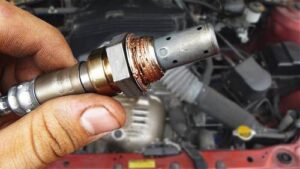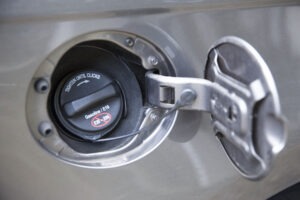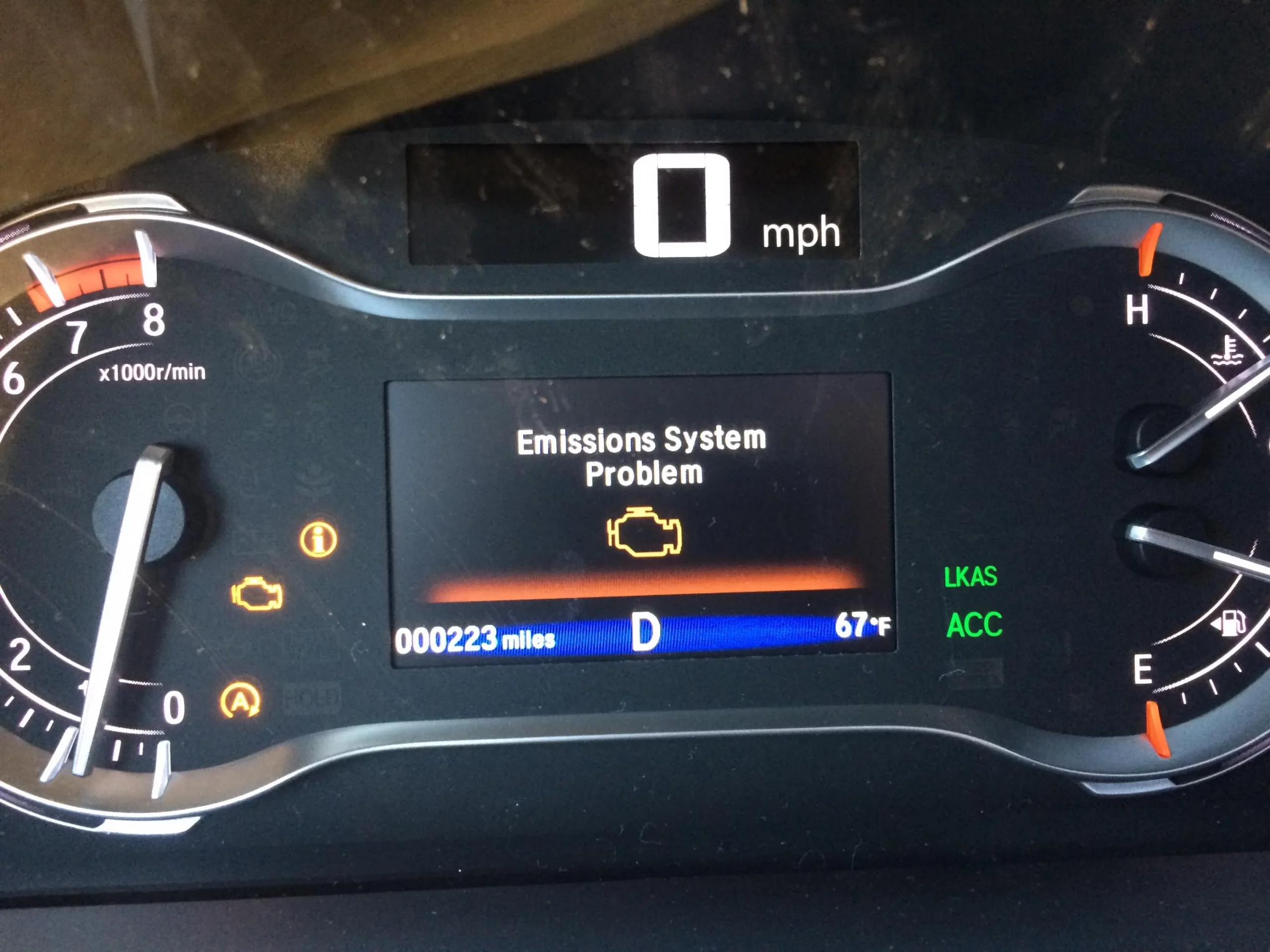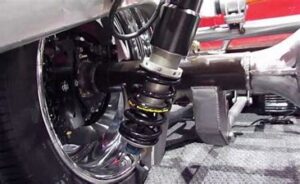You’re not the only proud owner of a Honda Civic who has to deal with the alarming “Emissions System Problem” warning light appearing on your dashboard. While there is reason for anxiety on this matter, it may help to know the fundamentals. The emissions system is essential for maintaining your car’s compliance with environmental regulations since it controls and minimizes dangerous exhaust emissions. The warning light indicates that there might be a bug or malfunction in this crucial system when it emerges.
We’ll examine typical causes of the Emissions System Problem on Honda Civics in this post, including anything from malfunctioning oxygen sensors to problems with the catalytic converter. We’ll explain the indicators to look out for and offer straightforward guidance to assist you in handling the circumstance. This article attempts to equip you with the knowledge necessary to handle and resolve the emissions system issue in your Honda Civic, so you may drive again with confidence whether you’re a do-it-yourself enthusiast or would rather call in a professional.
Table of Contents
Decoding The Emissions System Problem On Honda Civic In Detail
A Honda Civic’s “Emissions System Problem” is a term used to describe a problem or malfunction with the emissions control system of the car. The car’s engine emits dangerous pollutants into the air, which the emissions system is in charge of controlling and minimizing. A warning light may appear on the dashboard when the system detects an issue, alerting the user to the situation. A broken oxygen sensor, a catalytic converter that isn’t working properly, a loose gas cap, or issues with the exhaust system are common reasons for this problem.

Pollutant emissions can rise due to a malfunctioning emissions system, which can harm the environment and can result in the vehicle failing emissions testing. The issue must be resolved quickly to preserve the vehicle’s functionality, fuel economy, and adherence to environmental regulations. It is advisable to seek the aid of a trained mechanic to identify and address the particular issue causing the emissions system problem. The car can function more smoothly and have less environmental impact with regular maintenance and prompt repairs.
Common Causes Of The Emissions System Problem On Your Honda Civic
However, now that we’ve understood the emissions system problem on Honda Civics in detail. Additionally, now we’ll see its common causes. A Honda Civic’s emissions system is essential in minimizing the dangerous pollutants that the car’s exhaust releases into the atmosphere. A driver’s Honda Civic’s emissions system problem indicates that there is a problem compromising the system’s effectiveness. Here are a few typical reasons, broken down into easy terms:
1. Oxygen Sensor Problem:
A broken oxygen sensor is one of the main reasons for emissions system issues. This sensor assists the engine control module in regulating the air-fuel mixture by measuring the amount of oxygen in the exhaust gases. Increased emissions and poor fuel combustion may result from a malfunctioning sensor.

2. Missing Or Loose Gas Cap:
The emissions system alert may be activated by a missing or loose gas cap. Increased emissions can result from a loosely sealed gas cap, which lets fuel vapours escape and contributes to maintaining the correct pressure in the fuel system.
3. Catalytic Converter Problems:
One device that transforms toxic gasses into less toxic ones is a catalytic converter. Its efficiency may decrease over time if it becomes blocked or fails. Higher emissions and the warning light may come on as a result of this.
4. Broken Mass Airflow Sensor:
To help calculate the proper amount of fuel for combustion, the mass airflow sensor detects the amount of air entering the engine. Increased emissions may result from an imbalance in the air-fuel combination caused by a malfunctioning sensor.

5. Issues With The EGR Valve:
Additionally, to cut down on pollution, part of the exhaust gases are recirculated back into the engine using the Exhaust Gas Recirculation (EGR) valve. EGR valves locked open or closed can have an impact on engine performance and lead to higher emissions.
6. Vacuum Hose Leaks:
A series of vacuum hoses powers the various parts of the emissions system. Additionally, the system’s proper operation may be interfered with and emissions may rise if these hoses leak or crack.
7. Problems With The EVAP (Evaporative Emission Control System):
Fuel vapours cannot escape into the atmosphere thanks to the EVAP system. Emissions system alerts may be caused by issues with the EVAP system, such as a broken charcoal canister or a malfunctioning purge valve.

8. Malfunction Of The Electronic Control Module (ECM):
The engine control module, or ECM, is comparable to the brain of the car. When it malfunctions, it can lead to several problems, including emissions-related problems. An ECM malfunction may lead to improper regulation of the emissions components.
Therefore, you must take quick action when your Honda Civic’s emissions system warning light lights. The precise cause of the issue can be found and fixed with the assistance of a skilled mechanic and a comprehensive diagnostic, guaranteeing the car runs effectively and sustainably.
How To Fix The Emissions System Problem On Your Honda Civic?
It’s critical to take immediate action to fix any emissions system problem on Honda Civics to maintain peak engine performance and lessen environmental impact. However, to regulate and reduce the amount of toxic exhaust gases emitted into the atmosphere, the emissions system is essential. Here are a few easy fixes for typical emissions system issues:
1. Examine The Gas Cap:
A broken or loose gas cap is frequently to blame for the emissions warning light coming on. Therefore, after refuelling, make sure the gas cap is tightened all the way. If the cap is broken, you might want to get a new one. However, proper sealing of the gas cap keeps fuel vapours from escaping and aids in sustaining fuel system pressure.

2. Look Over The Oxygen Sensor:
The oxygen sensor keeps track of the exhaust gases’ oxygen content. Fuel economy might be decreased and emissions raised as a result of a malfunctioning sensor. It is advisable to replace the sensor if it is malfunctioning. However, most oxygen sensors are found in the exhaust system, and changing them is frequently a simple procedure.
3. Catalytic Converter Replacement:
Through the process of turning pollutants into less dangerous compounds. However, the catalytic converter is essential in lowering harmful emissions. Additionally, it could break down or get clogged over time. Consult a qualified mechanic for replacement if diagnostics reveal a problem with the catalytic converter.
4. Handle Leaks In The Exhaust System:
Engine performance can be hampered by exhaust leaks and elevated emissions. Furthermore, examine the exhaust system for any obvious damage or leaks. If any pipes or mufflers need to be replaced, do so to guarantee a tight and sealed exhaust system.

5. Vacuum Or Swap Out Air Filters:
Increased emissions may result from an air-fuel mixture that is impacted by a clogged or filthy air filter. Moreover, check air filters frequently and replace them as necessary. This is a straightforward maintenance procedure that can reduce emissions and increase fuel economy.
6. Maintain Engines Frequently:
Regular maintenance helps ensure optimal engine performance and lower emissions. Examples of this maintenance include routine oil changes and spark plug replacements. However, to maintain the best possible condition for the engine, adhere to the manufacturer’s recommended maintenance schedule.
7. See A Qualified Mechanic:
Additionally, see a qualified mechanic if the emissions system issue doesn’t go away as well as if you’re not sure what’s causing it. They may carry out a thorough diagnostic examination to pinpoint and resolve the particular problem impacting the emissions system of your Honda Civic.

Therefore, you can fix typical emissions system issues in your Honda Civic and help make the car run cleaner and more efficiently by following these easy steps. Maintaining your car properly and reducing its environmental impact can be achieved by routine maintenance and paying close attention to warning lights.
Repairing Cost To Fix The Emissions System Problem On Your Honda Civic
Additionally, depending on the nature of the issue, repairing a Honda Civic’s emissions system may cost different amounts. Common difficulties include malfunctioning exhaust system components, catalytic converters, and oxygen sensors. However, the cost of repairs might vary from $100 to $200 for replacing sensors to $500 to $2,000 for more involved procedures like replacing the catalytic converter. Before precisely calculating repair costs, it is imperative to have a professional diagnostic examination performed to identify the precise issue.

The total cost of the job will also include labour charges for the mechanic’s time and experience. In addition, the cost can go up if the problem involves intricate technological parts. Costly repairs can be avoided by performing routine maintenance and paying close attention to warning lights. It’s best to speak with a certified mechanic who can diagnose the exact issue with your Honda Civic and provide you with a precise price based on the necessary repairs.
Conclusion:
Therefore, the emissions system problem on Honda Civic suggests that there is an issue with the vehicle’s capacity to regulate and minimize dangerous exhaust fumes. Increased pollution and possible performance problems could result from this issue. Additionally, to guarantee that the vehicle satisfies environmental regulations and runs well, this issue must be resolved as soon as possible.
To diagnose and fix the emissions system issue, avoid more harm, and preserve the car’s environmentally friendly operation, contact a trained mechanic or stop by a Honda service shop. However, ignoring this problem could lead to more emissions and possibly harm the engine of the vehicle, which would affect its overall performance.



